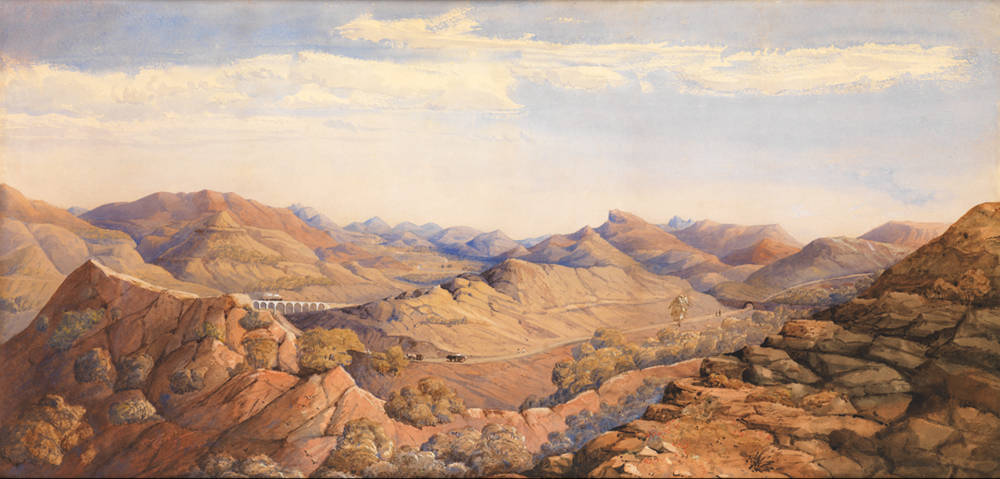
Bhor Ghat, Great India Peninsula Railway, Bombay. Watercolour, 13.5 x 27.5 inches. Initialled; inscribed on frame. Click on image to enlarge it.
As the Maas Gallery site points out, “India’s vast railway network is an enduring legacy of the British Raj. From the early 1840s, one of the biggest challenges facing it was how to cross the Western mountains between Mumbai and the fertile Deccan cotton-growing plains of Peninsular India – the most formidable section being the crucial 15 miles through the steep Bhor Ghat ('ghat' meaning mountain pass). This short length of track crosses 8 viaducts and runs through 25 tunnels: it was an engineering triumph. The Great Indian Peninsula Railway Company appointed James Berkely, one of the first graduates of the new Engineering Department of King's College, London, to do the job. It was initially thought that British contractors would carry out all the work, but it was soon realised that an enormous amount of local labour was needed. Tens of thousands of Indian labourers worked on this incredibly dangerous project between 1856 and completion in 1863, and several thousand lost their lives. During this period, in 1857-58, unrest amongst the rural population of the North, dissatisfied with British rule and ‘improvements,’ created the conditions for India's First War of Independence (known as the Indian Mutiny).
“This competent amateur water-colour was probably painted by a Briton connected to the railway. Ancient ox-drawn carts are contrasted with the marvel of modern travel.”
Related material
- Railways in British India
- The Disaster on the Great India Peninsula Railway (1869)
- The Reversing Station, Bhore Ghaut, on the Great India Peninsula Railway
The Maas Gallery, London has most generously given its permission to use in the
Readers should consult the gallery website (link) to obtain information about recent exhibitions and to order their catalogues. [GPL]
Created 8 February 2015